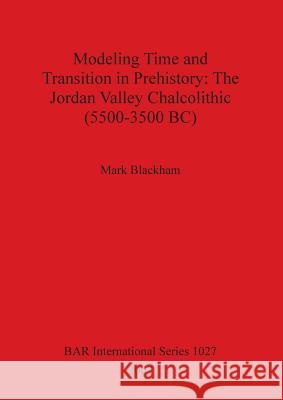Modeling Time and Transition in Prehistory: The Jordan Valley Chalcolithic (5500-3500 BC) » książka
Modeling Time and Transition in Prehistory: The Jordan Valley Chalcolithic (5500-3500 BC)
ISBN-13: 9781841714059 / Angielski / Miękka / 2002 / 188 str.
Modeling Time and Transition in Prehistory: The Jordan Valley Chalcolithic (5500-3500 BC)
ISBN-13: 9781841714059 / Angielski / Miękka / 2002 / 188 str.
(netto: 291,00 VAT: 5%)
Najniższa cena z 30 dni: 304,92
ok. 30 dni roboczych
Bez gwarancji dostawy przed świętami
Darmowa dostawa!
The objectives of this study are two-fold. One is to introduce alternative methods for the construction of chronological frameworks in order to determine the development sequence of Chalcolithic (5100-3500 BC) society in the Jordan Valley region of the southern Levant. In this regard, it addresses a number of issues relating to settlement and social change throughout the period and proposes several explanations based on the sequence of events. The second objective is to evaluate the theoretical and methodological understandings associated with the classification of chronological units. This study advocates the integration of all sources of chronological information for the purpose of constructing regional sequences. It introduces the Unitary Association Method of Relative Dating (UAM) as a means of developing relative sequences and demonstrates the usefulness of Bayesian methods for improving the precision of radiocarbon dates using stratigraphic information as a priori statements. In the final analysis, the agreement of both the relative and the radiocarbon sequence is considered.
The author sets himself two objectives in this study. One is to introduce alternative methods for the construction of chronological frameworks in order to determine the development sequence of Chalcolithic (5100-3500 BC) society in the Jordan Valley region of the southern Levant. In this regard, the work addresses a number of issues relating to settlement and social change throughout the period and proposes several explanations based on the sequence of events. The second objective is to evaluate the theoretical and methodological understandings associated with the classification of chronological units. This study advocates the integration of all sources of chronological information for the purpose of constructing regional sequences. In the final analysis, the agreement of both the relative and the radiocarbon sequence is considered.











